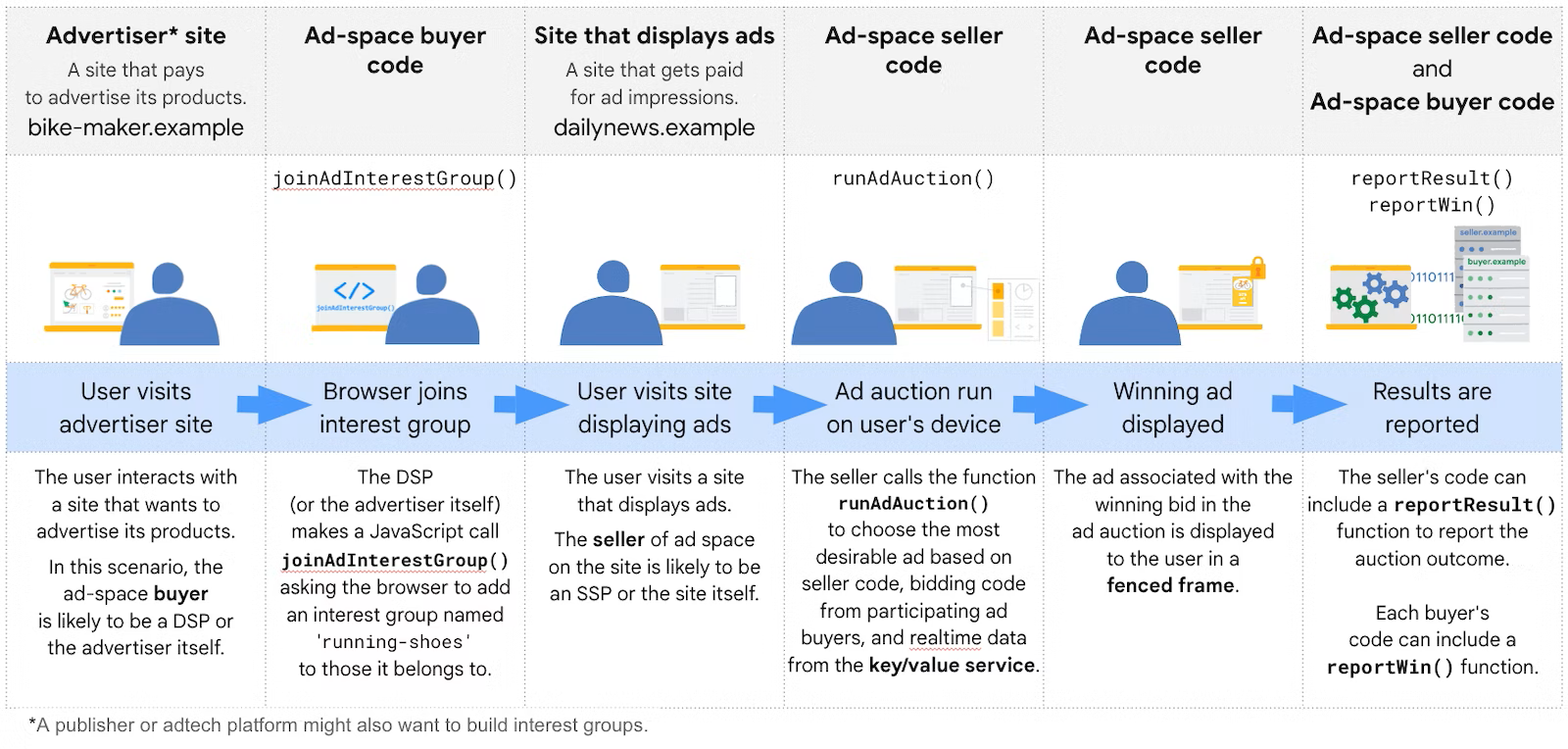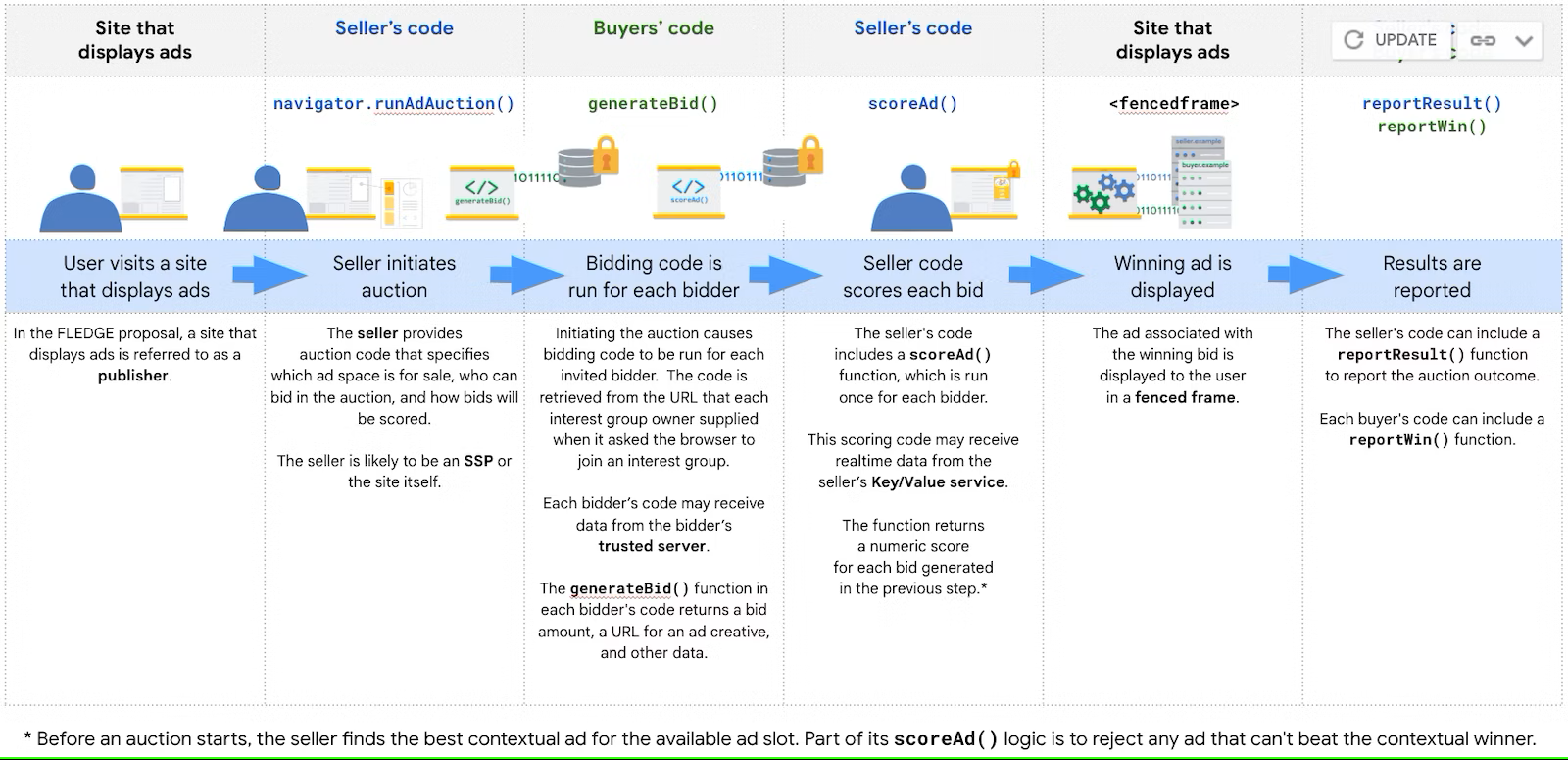As the looming Chrome third-party cookie deprecation gets closer, Google provided some well-received updates to help ease marketers’ concerns.
Google’s response to user privacy was the creation of the Privacy Sandbox. Within the Privacy Sandbox lives a series of proposals that satisfy the needs of consumers and advertisers alike.
One of the proposals in Privacy Sandbox is FLEDGE, initially introduced in January 2021. Over two years later, Google provided an important status update on the FLEDGE search engine auction features.
What Is FLEDGE?
Understanding what FLEDGE is (amongst other privacy offerings) is crucial for marketers to prioritize in 2023. Let’s run through a quick recap of the basics.
FLEDGE is a proposal within the Google Privacy Sandbox to serve remarketing and custom audience use cases where browsers block third-party tracking across websites and apps.
FLEDGE stands for:
- First
- Locally
- Executed
- Decision over
- Groups
- Experiment
For those not familiar, here is a quick view of how FLEDGE works:
 Image credit: developer.chrome.com
Image credit: developer.chrome.comEssentially, FLEDGE uses interest groups to display relevant ads to users.
Each interest group in FLEDGE has an owner, such as an advertiser, publisher, or ad tech. Depending on the owner, different use cases are created for ad-buying auctions.
A buyer can be an advertiser, a demand-side platform (DSP), or an interest group owner who owns multiple interest groups.
A diagram of the FLEDGE ad-buying auction is below.
 Image credit: developer.chrome.com
Image credit: developer.chrome.comThe privacy proposal was created to find a solution where the web browser stores user interest information – not the advertiser or ad platforms. Read more about FLEDGE and how it works here.
The Latest FLEDGE Update
In the latest update, Google provided specific FLEDGE features and their timelines for testing availability.
- Event-level auction win reporting. This is available for testing now and supported through at least 2026. It’s intended to make the transition to FLEDGE reporting easier.
- Trusted Execution Environment (TEE) usage for Key/Value service. This is available for testing now and will be required no sooner than Q3 2025.
- Fenced frames. This is available for testing now and will be required no sooner than 2026.
- K-anonymity. A threshold of “a crowd of 50 users per creative over 7 days” must be met. This will be available for testing later in Q3 2023.
- It improved FLEDGE + Attribution Reporting integration. This will be available for testing in Q2 2023 and is still in development.
- Bidding and Auction services. This is targeted for testing in H2 2023 and is still in development.
Users can experiment and participate in the FLEDGE API here. Note that not all advertisers are eligible for experimentation at the time of publication.
Advertisers Praise Upcoming FLEDGE Features
Updates such as the continued support of event-level auction reporting are a massive win for advertisers. Initially, it was supposed to be a temporary solution but is now being supported for at least another three years.
Navah Hopkins, Evangelist at Optmyzr, expressed her excitement about the upcoming FLEDGE updates:
One of the reasons I’m excited about FLEDGE is how seamless the logic and workflows are for advertisers and publishers to run with. The big hurdles to other privacy sandboxes were how muddled the tagging process was, as well as the limited topics taxonomy. That both advertiser and publisher get to communicate interest groups informed by on-device signals means it will be cleaner message mapping and easier to track.
Navah further commented on the transition differences between PPC and SEO:
On the PPC side, we should expect a fairly smooth transition and potentially new advertisers in the mix. On the SEO side, I see there being a lot more friction on monetization conversations as publishers balance ad inventory and SEO impact. A big benefit to FLEDGE is how real-time the auctions and tagging will be so testing will be easier to control.
Ultimately this is an exciting time for first-party audiences and brands should start building their interest groups to match their buyer personas.
In Summary
Since the announcement of Google pushing back third-party cookie deprecation until 2024, there have been many questions from marketers on what’s next.
New FLEDGE features, service announcements, and proposed timelines give marketers more transparency and action-oriented items to prepare for a world without cookies.
Stay up to date on the latest Privacy Sandbox announcements here.
Featured Image: rafapress/Shutterstock
